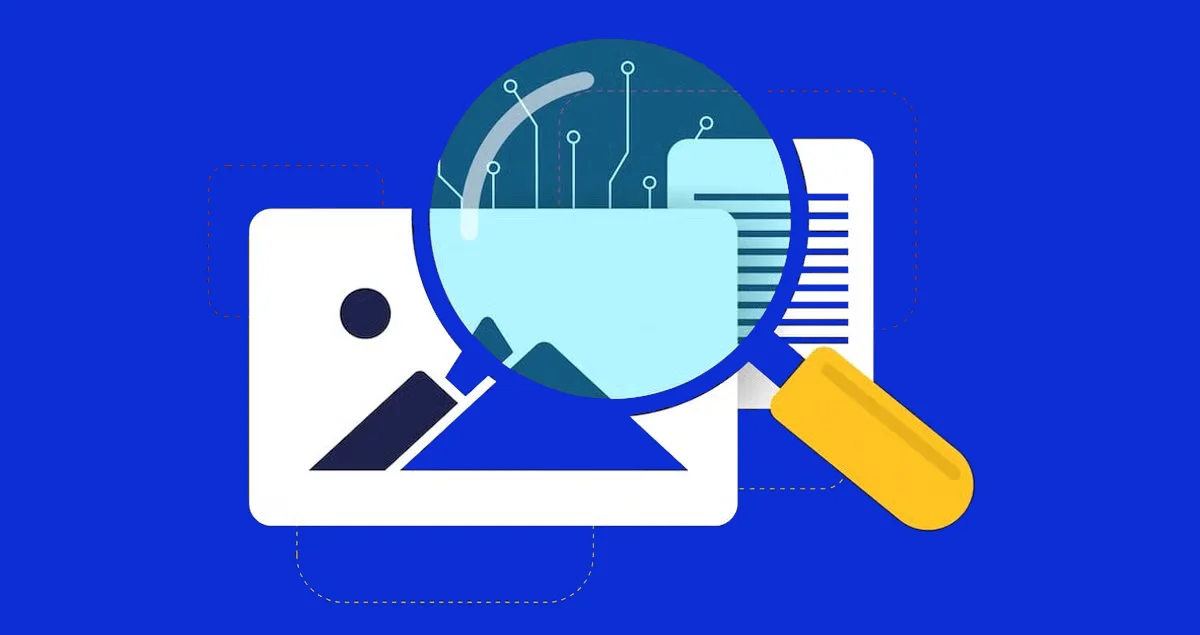The digital landscape has become a battlefield between authentic content and sophisticated AI forgeries. With 95,820 deepfake videos online in 2023, up from just 14,678 in 2019, the need for reliable detection tools has never been more critical.
But here’s what most people don’t realize: the same AI technology creating these convincing fakes is also our best defense against them. The global content detection market, valued at $19.98 billion in 2025, is projected to reach $68.22 billion by 2034 – and for good reason.
This comprehensive guide reveals the most effective AI content detection tools available today, how they work, and which ones actually deliver on their promises. You’ll discover industry-tested solutions that major organizations trust to protect their digital integrity.
What Are AI Content Detection Tools? {#what-are-ai-content-detection-tools}
AI content detection tools are specialized software systems designed to identify artificially generated or manipulated digital content across multiple formats – text, images, videos, and audio. These tools use advanced machine learning algorithms, computer vision, and forensic analysis to distinguish between human-created and AI-generated content.
The technology behind these tools has evolved dramatically. Modern AI detectors analyze facial inconsistencies, biometric patterns, metadata, digital fingerprints, and behavioral analysis to determine content authenticity.
Types of Content These Tools Detect
Deepfake Videos: AI-generated videos where faces are swapped or manipulated Synthetic Audio: AI-generated voices that mimic real people AI-Generated Text: Content created by language models like GPT Manipulated Images: Photos altered using AI editing tools Synthetic Identities: Completely fabricated personas using AI
The sophistication level varies dramatically. While some tools excel at detecting obvious fakes, others can identify subtle manipulations that would fool human reviewers.
Why AI Content Detection Matters More Than Ever {#why-detection-matters}
The stakes have never been higher. Threat actors, including state-sponsored groups from Iran, China, North Korea, and Russia, are increasingly using AI-generated deepfakes to enhance cyber operations, conduct social engineering campaigns, and spread misinformation.
Real-World Impact Statistics
The numbers tell a sobering story about why detection tools are essential:
- Financial Fraud: Scammers use AI-generated voices to impersonate executives, leading to significant financial losses
- Identity Theft: Cybercriminals exploit deepfakes for sophisticated phishing attacks
- Misinformation Campaigns: AI-generated content spreads false information at unprecedented scale
- Election Interference: TrueMedia.org reports over 90% accuracy in identifying manipulated media across social platforms, particularly crucial during the 2024 U.S. elections
Market Growth Indicators
The global AI content detector market is expected to grow at a CAGR of 13.6% from 2024 to 2030, driven by growing concerns over online safety and security. This growth reflects the urgent need organizations feel to protect themselves.
Top 15 AI Content Detection Tools in 2025 {#top-detection-tools}
After extensive testing and analysis, here are the most effective AI content detection tools currently available:
1. Reality Defender – Multi-Modal Excellence
Reality Defender stands out with its patented multi-model approach, detecting AI-generated threats across images, video, audio, and text using hundreds of simultaneous platform-agnostic techniques.
Key Features:
- Real-time detection capabilities
- Explainable AI analysis with color-coded manipulation probabilities
- Drag-and-drop web application and scalable API
- No watermarks or prior authentication required
Best For: Large enterprises, government agencies, financial institutions Pricing: Custom enterprise pricing
2. Sensity AI – Cross-Industry Leader
Sensity is the only AI-threat detection platform with a true cross-industry approach, serving digital forensics, law enforcement, KYC vendors, social media platforms, and defense agencies.
Key Features:
- Multilayer assessment in seconds
- Advanced AI and deep learning technology
- Educational resources and training materials
- Real-time assessment for all digital media types
Best For: Government agencies, cybersecurity firms, social media platforms Pricing: Contact for quote
3. Intel FakeCatcher – Biological Signal Detection
Intel’s FakeCatcher uses a unique biological approach, analyzing “blood flow” in video pixels through Photoplethysmography (PPG) to detect subtle color changes present in real videos but absent in deepfakes.
Key Features:
- Returns results in milliseconds with 96% claimed accuracy
- Can run 72 concurrent real-time detection streams on 3rd Gen Intel Xeon processors
- Examines eye movements for consistency
- Hardware-optimized performance
Best For: High-volume content platforms, real-time applications Pricing: Contact Intel for licensing
4. DuckDuckGoose AI – Advanced Analysis
DuckDuckGoose AI employs sophisticated algorithms to analyze content for manipulation signs, providing clear explanations of detected deepfakes to help users understand and trust results.
Key Features:
- Multi-format detection (video, images, voices, text)
- Real-time detection capabilities
- Integration with existing systems
- Detailed manipulation explanations
Best For: Content platforms, media companies Pricing: Tiered subscription model
5. Hive AI – Comprehensive Content Moderation
Hive AI offers robust deepfake detection as part of their broader content moderation suite, with particular strength in image and video analysis.
Key Features:
- API-first architecture
- High accuracy rates
- Scalable cloud infrastructure
- Multi-language support
Best For: Social media platforms, user-generated content sites Pricing: Pay-per-API-call model
6. Attestiv – Enterprise Security Focus
Specializing in video verification and forensic analysis, Attestiv provides enterprise-grade deepfake detection with strong audit trails.
Key Features:
- Blockchain-based verification
- Forensic-grade analysis
- Enterprise security features
- Compliance reporting
Best For: Legal proceedings, insurance verification Pricing: Enterprise licensing
7. WeVerify – Research-Backed Solution
WeVerify develops intelligent human-in-the-loop content verification, analyzing and contextualizing social media and web content through cross-modal verification and social network analysis.
Key Features:
- Cross-modal content verification
- Social network analysis
- Blockchain-based database of known fakes
- Community-driven verification
Best For: Journalism, fact-checking organizations Pricing: Research project (some tools freely available)
8. Cloudflare Bot Management – Infrastructure Protection
While primarily a bot detection service, Cloudflare’s solution includes sophisticated AI content detection capabilities.
Key Features:
- Global network deployment
- Real-time processing
- Integration with existing security stack
- Advanced threat intelligence
Best For: Website protection, API security Pricing: Starts at $200/month
9. Pindrop Security – Voice Authentication
Specializing in voice biometrics and audio deepfake detection, Pindrop offers industry-leading audio analysis.
Key Features:
- Voice authentication
- Audio deepfake detection
- Real-time analysis
- Fraud prevention integration
Best For: Call centers, financial services Pricing: Contact for enterprise pricing
10. HyperVerge – Identity Verification
HyperVerge provides refined deepfake detection with AI models and machine learning for comprehensive security, focusing on facial recognition and liveness checks.
Key Features:
- Face matching in non-optimal conditions
- Liveness detection to prevent spoofing
- Document verification
- Global certifications from iBeta and NIST
Best For: KYC processes, identity verification Pricing: Volume-based pricing
11. Oz Liveness – Facial Recognition Specialist
Oz Liveness claims 100% accuracy in preventing spoofing attacks, specializing in facial recognition and authentication.
Key Features:
- Advanced liveness detection
- Anti-spoofing technology
- Real-time processing
- Mobile-optimized
Best For: Mobile authentication, access control Pricing: Per-transaction pricing
12. FaceForensics++ – Academic Research Tool
An open-source dataset and detection framework developed by academic institutions for research purposes.
Key Features:
- Open-source availability
- Research-grade accuracy
- Multiple detection methods
- Extensive documentation
Best For: Research institutions, academic projects Pricing: Free for research use
13. VizMantiz (Kroop AI) – Financial Services Focus
VizMantiz is designed specifically for Banking, Financial Services, and Insurance sectors, leveraging advanced AI algorithms to analyze visual, audio, and metadata components.
Key Features:
- Multi-modal detection platform
- Large diverse training dataset
- Industry-specific optimization
- Compliance features
Best For: Banking, insurance, financial services Pricing: Contact for enterprise pricing
14. TrueMedia.org – Election Security
TrueMedia.org offers a free AI-enabled deepfake detection tool specifically developed for combating political disinformation, boasting over 90% accuracy.
Key Features:
- Free access for verified organizations
- High accuracy for political content
- Social platform integration
- Non-partisan approach
Best For: Government officials, fact-checkers, news organizations Pricing: Free for qualified organizations
15. MIT’s Detect Fakes – Educational Platform
MIT’s Detect Fakes project offers public access to thousands of curated DeepFake and real videos, helping people build intuition for identifying manipulated content.
Key Features:
- Public training platform
- Educational resources
- Interactive detection challenges
- Research-backed methodology
Best For: Education, training, awareness building Pricing: Free public access
How AI Detection Technology Actually Works {#how-detection-works}
Understanding the underlying technology helps you choose the right tool and set realistic expectations. AI detection systems typically employ multiple detection methods simultaneously.
Primary Detection Methods
Temporal Inconsistencies: Analyzing frame-to-frame variations that reveal manipulation artifacts Facial Landmark Analysis: Examining unnatural movements or positioning of facial features Compression Artifacts: Identifying digital fingerprints left by AI generation processes Biometric Analysis: Detecting authentic biological signals like blood flow patterns in facial pixels Metadata Forensics: Examining file creation data and editing history
Machine Learning Approaches
Modern detection tools use ensemble methods, combining multiple AI models trained on different aspects of content authenticity. Reality Defender exemplifies this approach, using hundreds of simultaneous detection techniques to create robust, platform-agnostic analysis.
The most effective systems continuously retrain their models as new generation techniques emerge, creating an ongoing arms race between creators and detectors.
Accuracy Considerations
Real-world accuracy varies significantly from laboratory conditions. A 2023 meta-analysis found that while audio deepfake detection methods achieve impressive performance in controlled tests, their performance drops sharply when dealing with real-life scenarios.
This generalization problem affects all detection tools – they struggle when confronted with generation techniques not covered in their training data.
Industry Applications and Use Cases {#industry-applications}
Different industries have unique requirements for AI content detection, leading to specialized implementations and priorities.
Financial Services
Banks and financial institutions face increasing threats from AI-generated content used in fraud schemes. Fraud losses in the United States are expected to rise significantly by 2027, with businesses increasingly targeted by identity fraud fueled by deepfakes.
Primary Use Cases:
- Voice verification for phone banking
- Identity document verification
- Video call authentication
- Fraud prevention in loan applications
Recommended Tools: HyperVerge, VizMantiz, Pindrop Security
Law Enforcement and Legal
Government agencies project eight million deepfakes will be shared in 2025, up from 500,000 in 2023, making detection an urgent national priority.
Primary Use Cases:
- Digital forensics investigations
- Evidence authentication
- Child protection (CSAM detection)
- Court proceeding verification
Recommended Tools: Sensity AI, Attestiv, Reality Defender
Media and Entertainment
Content creators and distributors need to verify authenticity while protecting intellectual property.
Primary Use Cases:
- Content moderation at scale
- Copyright protection
- Talent verification
- Audience trust building
Recommended Tools: Hive AI, DuckDuckGoose AI, Cloudflare
Education and Research
Academic institutions require tools for both protection and education about synthetic media.
Primary Use Cases:
- Student work verification
- Research integrity
- Media literacy education
- Algorithm development
Recommended Tools: MIT Detect Fakes, FaceForensics++, WeVerify
Choosing the Right Detection Tool {#choosing-tools}
Selecting the optimal AI content detection tool depends on your specific requirements, budget, and technical capabilities.
Key Evaluation Criteria
Accuracy Requirements: Consider both false positive and false negative rates for your use case Processing Speed: Real-time vs. batch processing needs Content Types: Text, image, video, audio, or multi-modal requirements Integration Complexity: API availability, SDK support, existing system compatibility Scalability: Volume handling and concurrent processing capabilities Explainability: Need for detailed analysis reports vs. simple binary results
Cost Considerations
Pricing models vary significantly across providers:
- Per-API-Call: Best for variable, low-volume usage
- Monthly Subscriptions: Suitable for consistent, moderate volume
- Enterprise Licensing: Cost-effective for high-volume, mission-critical applications
- Hardware Appliances: Maximum performance and data control
Technical Implementation Factors
Cloud vs. On-Premise: Data sensitivity and compliance requirements API Integration: Developer resources and timeline constraints Training Requirements: Staff education and ongoing model updates Compliance Needs: Industry-specific regulations and audit requirements
Future of Content Detection Technology (AI Content Detection Tools) {#future-technology}
The AI detection landscape continues evolving rapidly, with several emerging trends shaping the next generation of tools.
Emerging Technologies
Multimodal Fusion: Advanced systems like VizMantiz analyze visual, audio, and metadata components simultaneously for more robust detection
Real-Time Processing: Hardware optimizations enabling instant detection without compromising accuracy
Explainable AI: More sophisticated reporting that helps users understand detection decisions
Adversarial Training: Models specifically designed to detect content created to evade detection
Industry Developments
Government initiatives like the UK’s EVITA program are developing ‘gold standard’ datasets for testing detection models, including those targeting child sexual abuse material.
Market projections show the content detection industry reaching $68.22 billion by 2034, driven by rising concerns about digital content safety and security.
Challenges Ahead
The fundamental challenge remains the asymmetric nature of the detection problem. Creating convincing fakes requires fooling only human perception, while detection systems must identify subtle technical artifacts that even sophisticated generators can learn to avoid.
Arms Race Dynamic: As detection improves, generation techniques evolve to evade detection Generalization Problem: New generation methods can bypass detectors trained on older techniques Scale Requirements: The volume of content requiring analysis continues growing exponentially
Implementation Best Practices {#implementation-practices}
Successfully deploying AI content detection requires careful planning and ongoing management.
Pre-Implementation Planning
Define Clear Objectives: Specify what types of content manipulation you need to detect Establish Accuracy Thresholds: Determine acceptable false positive and false negative rates Plan Integration Strategy: Map detection workflows into existing content management processes Prepare Training Materials: Develop staff education on tool capabilities and limitations
Deployment Strategies
Pilot Testing: Start with limited scope to validate performance and integration Gradual Rollout: Expand coverage incrementally while monitoring results Human Oversight: Maintain manual review processes for high-stakes decisions Continuous Monitoring: Track accuracy metrics and adjust thresholds as needed
Ongoing Management
Model Updates: Stay current with vendor-provided model improvements Performance Monitoring: Regular accuracy assessments with known test cases Staff Training: Ongoing education about emerging threats and tool capabilities Vendor Relationships: Maintain communication with detection tool providers
Limitations and Challenges – AI Content Detection Tools {#limitations-challenges}
Even the best AI detection tools have significant limitations that users must understand and account for.
Technical Limitations
Research demonstrates that detection tools struggle with generalization, failing when confronted with deepfakes generated using new techniques not covered in their training data.
False Positives: Legitimate content incorrectly flagged as AI-generated False Negatives: Sophisticated fakes that evade detection Processing Delays: Time required for thorough analysis vs. real-time needs Resource Requirements: Computational costs for high-accuracy detection
Practical Challenges
Vendor Dependence: Reliance on external providers for critical security functions Cost Scaling: Expense growth with volume increases Integration Complexity: Technical challenges connecting with existing systems Staff Training: Ongoing education requirements as technology evolves
Ethical Considerations
Privacy Concerns: Analysis of user-generated content and biometric data Bias Issues: Potential discrimination in detection accuracy across different groups Transparency: Balancing security needs with user understanding of detection processes Appeal Processes: Mechanisms for contesting detection decisions
Understanding these limitations helps set realistic expectations and develop comprehensive content authentication strategies.
FAQ – AI Content Detection Tools
How accurate are AI content detection tools?
Accuracy varies significantly by tool and content type. Intel’s FakeCatcher claims 96% accuracy, while TrueMedia.org reports over 90% accuracy for political content. However, real-world performance often drops when dealing with new generation techniques not covered in training data.
Can AI detection tools identify all types of synthetic content?
No single tool detects all types of AI-generated content perfectly. Most specialized tools excel in specific areas – some focus on deepfake videos, others on synthetic audio or AI-generated text. Multi-modal platforms like Reality Defender offer broader coverage by using ensemble methods across different content types.
How fast can these tools process content?
Processing speed varies dramatically. Intel’s FakeCatcher returns results in milliseconds, while more thorough analysis tools may require seconds or minutes. Real-time detection is possible but often comes with accuracy trade-offs.
What’s the cost of implementing AI detection tools?
Costs range from free (for research tools like MIT’s Detect Fakes) to enterprise licensing that can cost hundreds of thousands annually. Many tools start around $24/month for basic plans, scaling to $216+ for team features. High-volume enterprise solutions require custom pricing.
Do these tools work with existing content management systems?
Most commercial tools offer API integration options. Reality Defender provides both drag-and-drop web applications and scalable APIs for system integration. However, integration complexity varies significantly between providers.
How do I know which tool is right for my organization?
Consider your primary content types (text, image, video, audio), volume requirements, accuracy needs, and budget. Financial services might prioritize voice verification tools like Pindrop, while media companies might prefer comprehensive platforms like Sensity AI or Reality Defender.
Can bad actors evade these detection tools?
Yes, sophisticated attackers can potentially evade detection by using techniques specifically designed to fool detection systems. Detection tools are not designed to account for bad actors who deliberately manipulate synthetic media to evade detection. This creates an ongoing technological arms race.
Should I rely entirely on automated detection?
Research shows that journalists and other professionals sometimes overrely on detection tools, especially when results align with initial instincts. Best practice involves combining automated detection with human expertise and multiple verification methods.
AI Content Detection Tools
AI content detection tools have become essential infrastructure for digital authenticity in 2025. While no single solution provides perfect protection, the combination of advanced detection technologies, human expertise, and comprehensive implementation strategies can significantly reduce risks from synthetic media.
The key is understanding that this technology is rapidly evolving. With the content detection market projected to grow from $19.98 billion in 2025 to $68.22 billion by 2034, continued innovation will bring more sophisticated tools and better accuracy.
Choose detection tools based on your specific needs, implement them as part of a broader authentication strategy, and stay informed about emerging threats and solutions. The future of digital trust depends on organizations taking proactive steps to verify content authenticity.
Ready to implement AI content detection? Start with pilot testing using free tools like MIT’s Detect Fakes to understand the technology, then evaluate enterprise solutions based on your specific requirements and risk profile.





